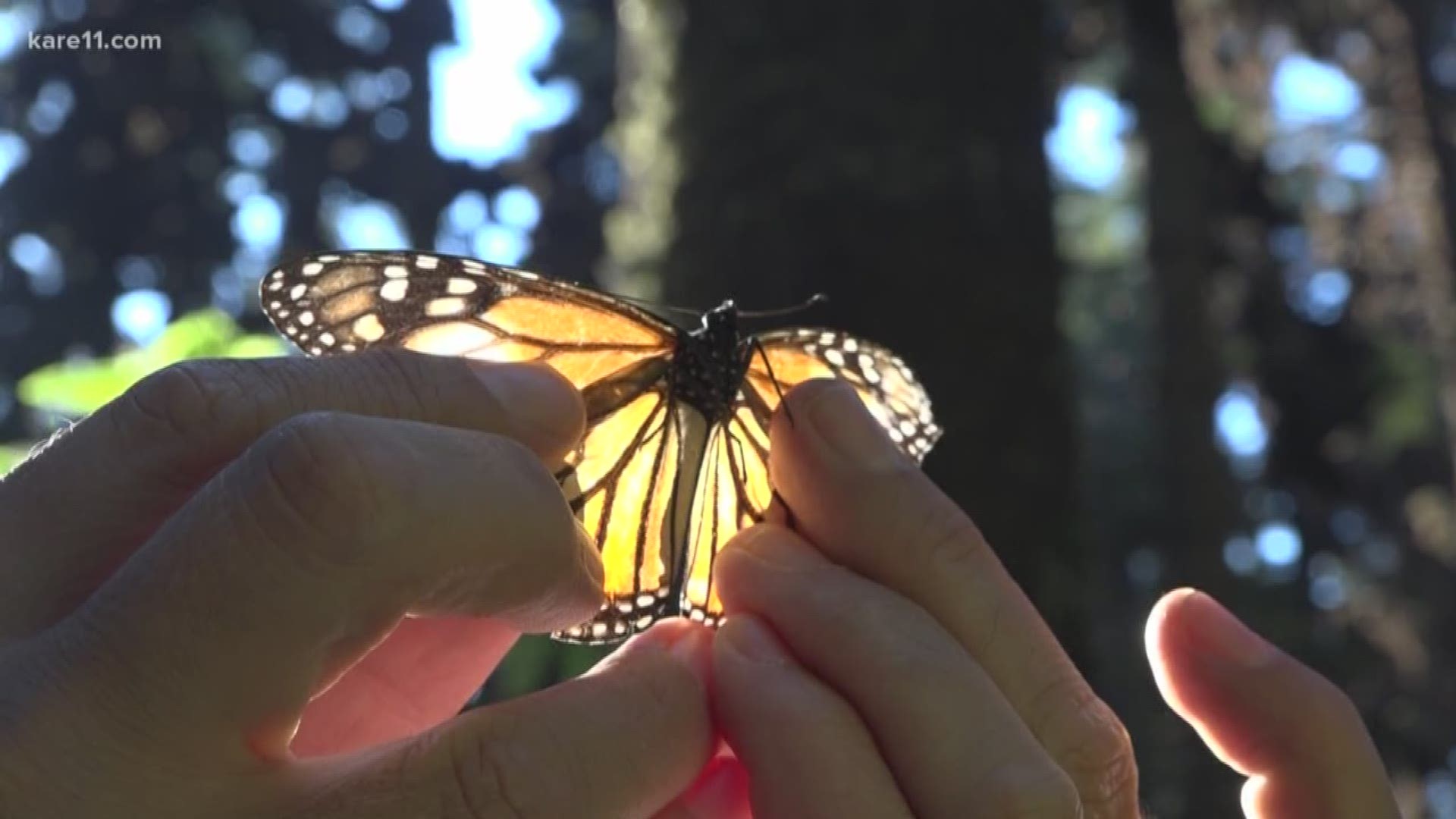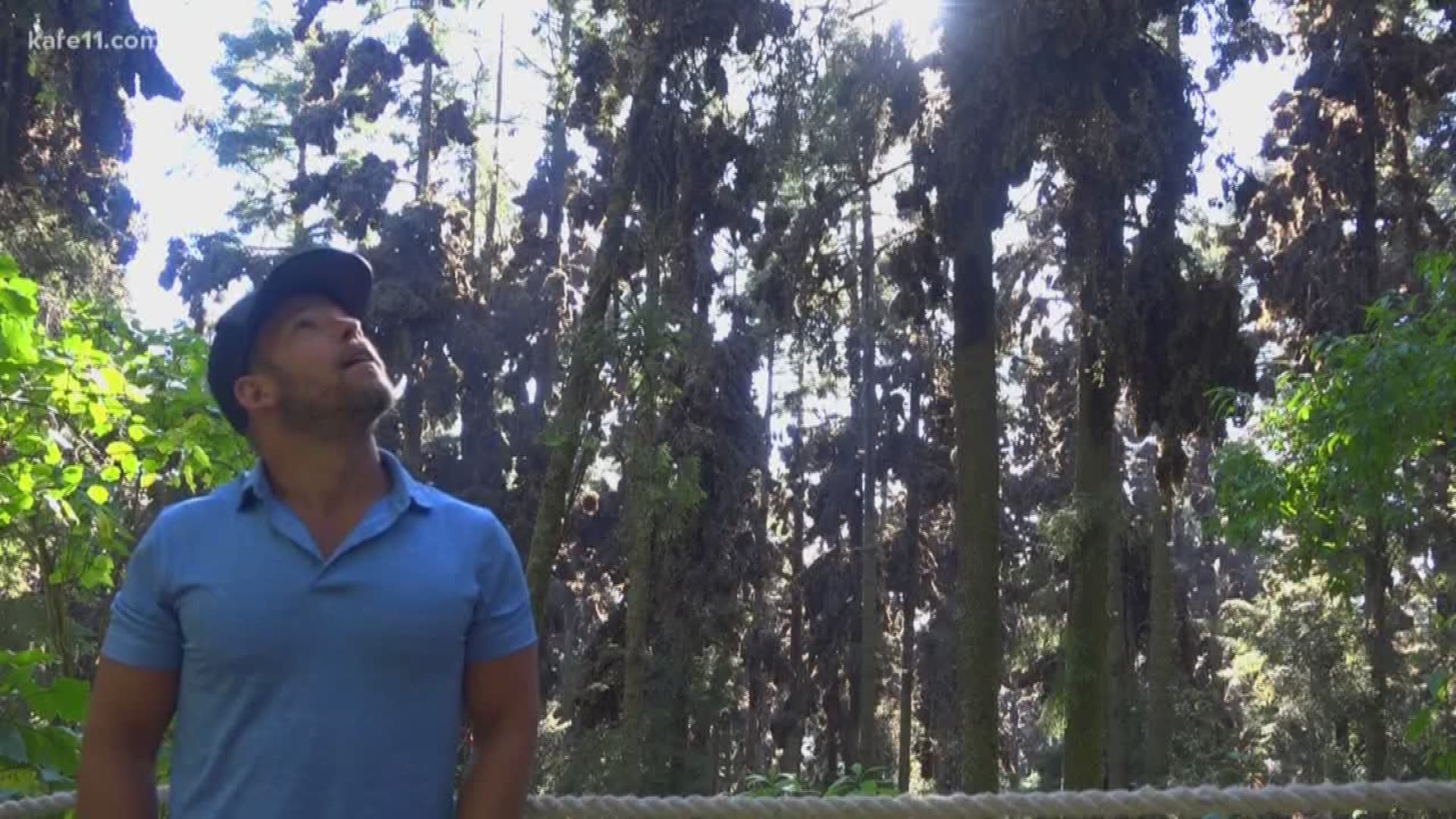ANGANGUEO, Michoacán — Millions of Minnesotans head to Mexico every winter, but I'm not talking about people on spring break.
I'm talking about our state insect - the Monarch butterfly!

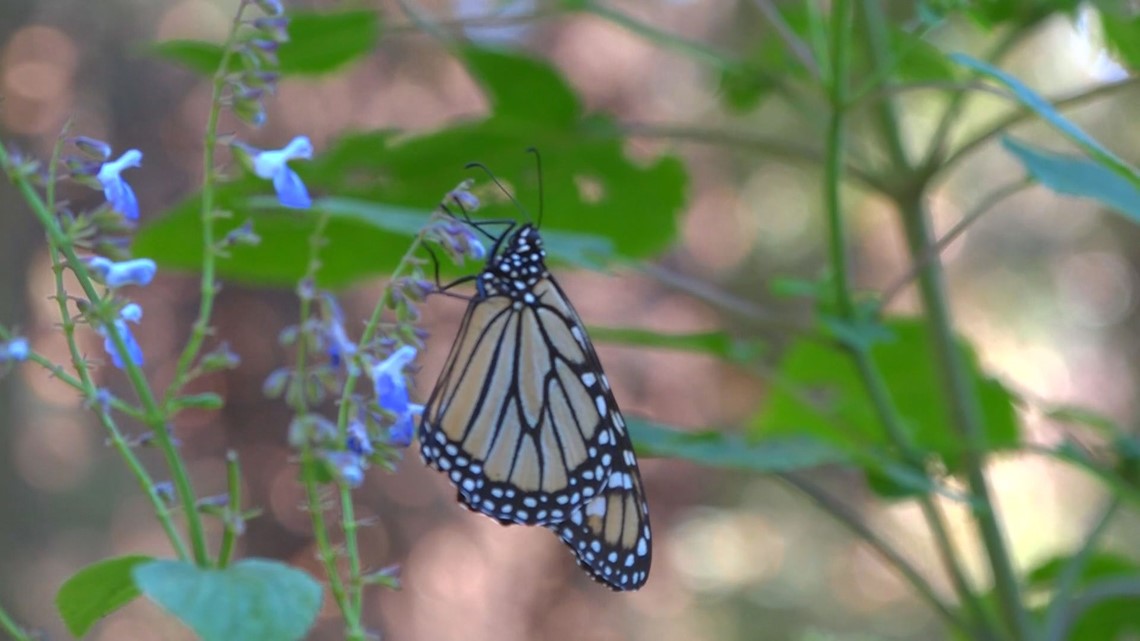
They're not beach-bound; they're headed to the trans-volcanic mountains of central Mexico to migrate for the winter.
Insect populations worldwide are going extinct at 8 times the rate of mammals and birds. The ancient migration of Monarch butterflies to Mexico is also threatened.
For many hundreds of years, the locals of Angangueo, Mexico have believed the Monarch butterfly is the soul of their departed ancestors. The Monarchs arrive every year around the Day of the Dead to "visit" the locals.
Regardless of what you believe, it’s hard NOT to be in awe of these winter sanctuaries in the Mexican mountains. Fir trees shelter hundreds of millions of Monarch butterflies.

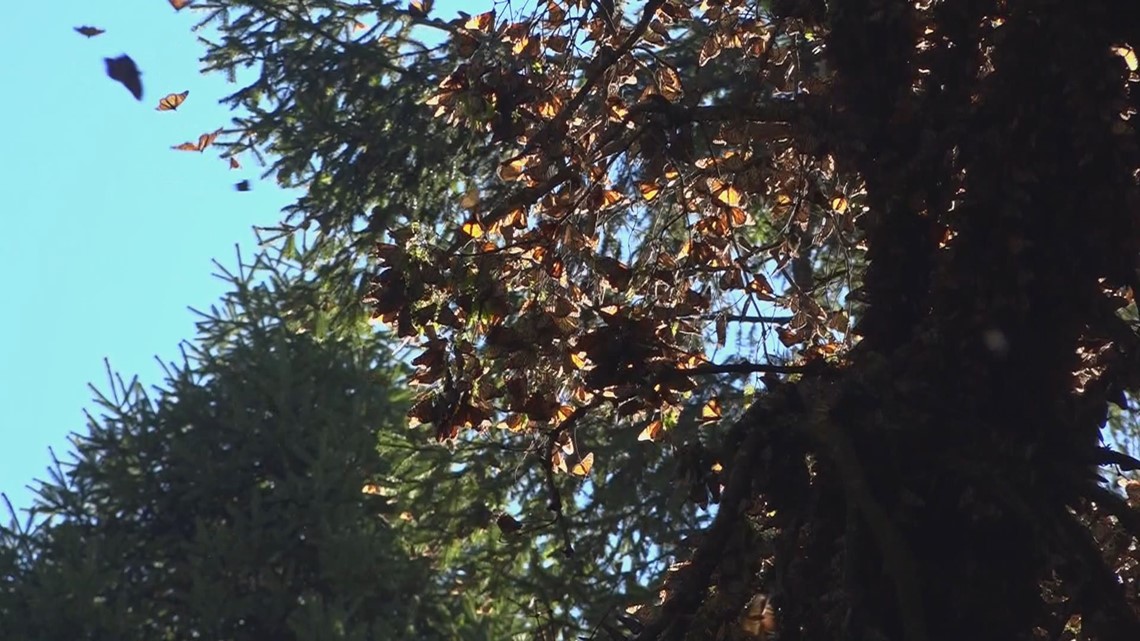
When the sun was shining, I could see millions or thousands flying around me. When it was cloudy, I could see them attached to the trees.
But why do the Monarchs go all the way to Mexico to migrate?
It’s all about microclimates. Monarchs are a tropical butterfly, which means they can’t freeze. They need to stay cool enough to preserve their energy to mate and to move again in March.
Microclimates, or that perfect condition for Monarchs, can be found in these mountains. It doesn’t get too hot or too cold, and the butterflies are protected by the fir trees.

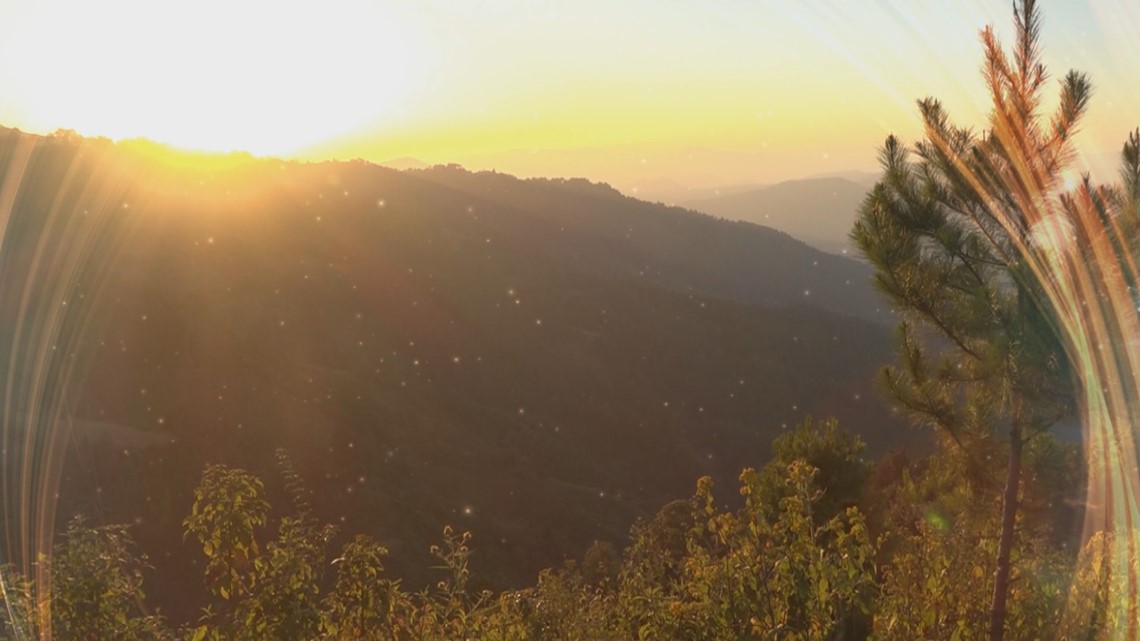
These Monarchs of the migratory generation came from thousands of miles away, from places like Canada and Minnesota. They pull off quite a feat.
The life span of a non-migratory monarch is going to be from 4 to 6 weeks, while the lifespan of a migratory generation is going to last up until 8 to 9 months.
That fascinates both tourists and biologists like Patricia Valdespino. Valdespino explains how the Monarchs are able to pull this off.
“They have not produced the hormone that makes them sexually mature. That hormone is temperature dependent…and that is their secret for longevity." Valdespino said.
Right now, the temperature is getting warmer in those Mexican mountains. The Monarchs will start to mate, and the females will make one more journey north to Texas and Louisiana to start the migration north where they will lay eggs and die.
Citizen scientists across North America have helped us to track these migrations and realize their extent.
RELATED: KARE 11's Monarch mission
"The Monarchs still harbor lots of secrets for biologists and for humanity," Valdespino said. "We know the numbers are decreasing little by little. Maybe the migration phenomena was truly getting to the end. We know that they are very strong but we know that they are very fragile."
I discovered a tag (YGR-978) from a Monarch that came all the way from Michigan. Sadly, that Monarch died in Mexico, because it didn't get to fulfill its mission to mate.


“Our understanding, it has been a community effort. Not a community effort from Mexico, but from Canada, United States and Mexico together," Valdespino said. "That is also a good example of what we can do as society in terms of what we can do with our balance with nature.”
It’s up to all of us to ensure the butterfly that the local people call the ‘daughters of the sun’ continue their ancient migration.
The annual Monarch population count finished in January, and we have some good news this year. The eastern Monarch butterfly population that migrates from Minnesota and Canada to Mexico is up to levels not seen in 13 years!
That rise in population is from a combination of good weather last year and efforts from everyday people across the continent planting milkweed and pollinator gardens and working to use less pesticides.
Experts caution, however, Monarchs still require endangered species protections and are very much at risk. Click here to find out some simple things you can do in your own yard and how you can make better food purchase decisions.
Trying these tactics can help the incredible Monarch butterfly!
More from Explore With Sven:

